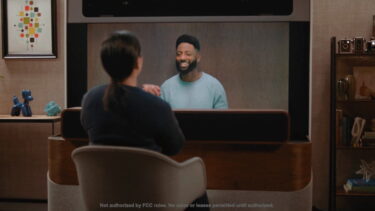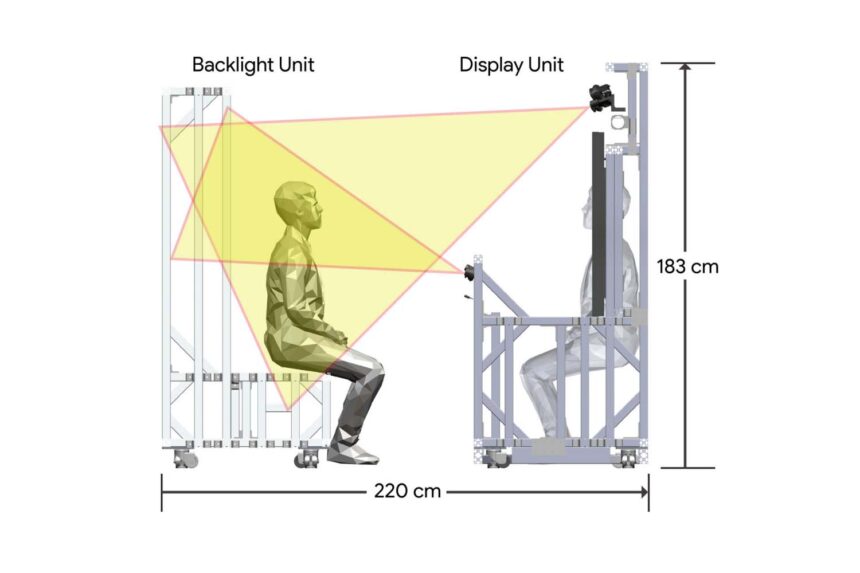Google rolls out Starline holo-phone booth at first companies

The best news first: Starline is alive!
Google first unveiled the Starline holo-phone booth in May 2021: It consists of numerous cameras, depth sensors and a light field display. In combination, these technologies can transmit a person in real-time in 3D to another Starline booth, where they can be displayed with a 3D effect.
The result is said to feel like you're talking to another person separated only by a windowpane - even if you're hundreds of miles away. According to Google, Starline callers also use more hand gestures, nod more frequently and move their eyebrows more often compared to traditional video chats. They also remember details from conversations better, according to Google.
Starline holo-cabs for first companies
So far, Google has been testing the booth in its offices. Now the technology is being rolled out to initial partner companies, including Salesforce, WeWork, T-Mobile and Hackensack Meridian Health. The cubicles are expected to be in place before the end of the year.
Starline aims to make video conferencing feel like you're standing across from each other - separated only by a pane of glass. | Video: Google
Google and its partners see the booths as a tech upgrade for ubiquitous video conferencing with higher immersion and a more natural feel to the conversation.
"Project Starline has the potential to drive deeper connections between people by bridging in-person and virtual experiences," says Andy White, SVP of business technology at Salesforce. Google's XR chief Clay Bavor also made it clear at the Starline launch that he sees the booth as a headset-free telepresence alternative.
Market launch in 2024?
The Starline prototype shown so far is still expected to cost several $10,000. Google is currently working to scale down the technology and make it more affordable. According to rumors, an official market launch could take place in 2024 - together with the Project Iris mixed reality headset.

The Starline cameras use two units to capture the face and torso for the most comprehensive 3D image possible. | Image: Google
Helping with the launch is Paul Greco, who worked for Magic Leap for nearly a decade and most recently held the role of CTO. Initial reports on Starline sound promising; they are still from the first prototype, shortly after the technology was unveiled in May 2021.
Note: Links to online stores in articles can be so-called affiliate links. If you buy through this link, MIXED receives a commission from the provider. For you the price does not change.